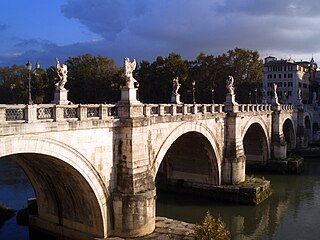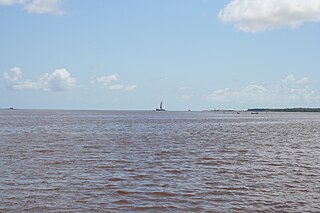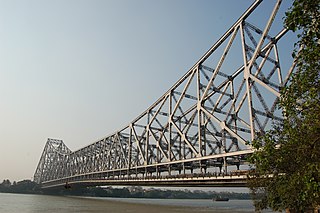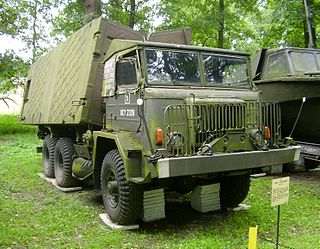 W
WA pontoon bridge, also known as a floating bridge, uses floats or shallow-draft boats to support a continuous deck for pedestrian and vehicle travel. The buoyancy of the supports limits the maximum load they can carry.
 W
WThis is a list of Roman bridges. The Romans were the world's first major bridge builders. The following list constitutes an attempt to list all known surviving remains of Roman bridges.
 W
WThese pontoon bridges are semi-permanent floating bridges located throughout the world. Four of the five longest floating bridges in the world are in Washington state.
 W
WThe Berbice Bridge is a pontoon bridge over the Berbice River near New Amsterdam in Guyana. The bridge is tolled and was opened on 23 December 2008.
 W
WThe Bergsøysund Bridge is a pontoon bridge that crosses the Bergsøysundet strait between the islands of Aspøya and Bergsøya in Møre og Romsdal county, Norway. The bridge is 931 metres (3,054 ft) long, the longest span is 106 metres (348 ft), and the maximum clearance to the sea is 6 metres (20 ft). The bridge has 13 spans.
 W
WThe Demerara Harbour Bridge is a 6,074-foot (1,851 m) long floating toll bridge. It was commissioned on 2 July 1978. The bridge crosses the Demerara River 4 miles (6.4 km) south of the Guyanese capital Georgetown, from Peter's Hall, East Bank Demerara to Schoon Ord, West Bank Demerara, connecting Demerara-Mahaica with Essequibo Islands-West Demerara on the west bank. There is a pedestrian footwalk. A raised section lets small vessels pass under. A retractor span lets large vessels pass. Construction of the Demerara Harbour Bridge began on 29 May 1976. Construction assistance was provided by the British Government, but the basic design was by a Guyanese, Capt. John Patrick Coghlan. The bridge was only designed to last 10 years, yet it is still going strong. Tolls are collected only in one direction of travel even though the bridge handles one lane of traffic in each direction. Traffic going west to east pays no toll.
 W
WThe Dongjin Bridge or Jianchunmen Pontoon Bridge (建春门浮桥) in Ganzhou, Jiangxi province, China is a pontoon bridge constructed over the Gong River in the Chinese Song Dynasty (960-1279). Situated outside the Jianchunmen gate of the Ganzhou city wall, it is the survivor of several pontoon bridges found in China.
 W
WFloating Bridge is a pontoon bridge located in Dubai, United Arab Emirates. The bridge was built between Al Garhoud and Al Maktoum Bridges mainly to reduce traffic in Al Maktoum Bridge. The bridge connects across the intersection near Deira City Centre and Dubai Creek Golf & Yacht Club, and ends at the intersection to the Riyadh Street, between Dubai Courts and the Creek Park. The bridge opened on 16 July 2007 where the project cost 155 million dirhams to build and has the capacity of 6,000 vehicles an hour. The bridge also serve as an alternative route for Al Maktoum Bridge where Salik was recently implemented. The Floating Bridge is the fifth crossing on the Dubai Creek while the others are Al Shindagha Tunnel, Al Maktoum Bridge, Al Garhoud Bridge and Business Bay Crossing.
 W
WThe Folding Boat Equipment, abbreviated as FBE, is a light pontoon bridging equipment which was in use in the British and its colonial armies during the 20th century. The equipment was introduced in 1928 and was the standard light bridge used for loads up to class 5, i.e. providing rafts or a bridge capable of transporting loads up to 5 tons of weight. The initial version was followed by a Mk II but without change of capacity. In 1938 the Mk III version of the bridge was introduced with significant changes and an increase of load capacity to 9 tons, i.e. load class 9.
 W
WThe Hobart Bridge was a floating arch bridge that crossed the River Derwent, connecting the eastern and western shores of the city of Hobart, Tasmania, Australia.
 W
WHowrah Bridge is a balanced cantilever bridge over the Hooghly River in West Bengal, India. Commissioned in 1943, the bridge was originally named the New Howrah Bridge, because it replaced a pontoon bridge at the same location linking the two cities of Howrah and Kolkata (Calcutta). On 14 June 1965 it was renamed Rabindra Setu after the great Bengali poet Rabindranath Tagore, who was the first Indian and Asian Nobel laureate. It is still popularly known as the Howrah Bridge.
 W
WThe Nordhordland Bridge is a combined cable-stayed and pontoon bridge which crosses Salhusfjorden between Klauvaneset and the island of Flatøy in Vestland county, Norway. It is 1,614 meters (5,295 ft) long, of which the pontoon section is 1,246 meters (4,088 ft) long. The cable-stayed section consists of a single 99-meter (325 ft) tall H-pylon which has a length of 368 meters (1,207 ft) and a main span of 172 meters (564 ft). This allows for a clearance of 32 meters (105 ft).
 W
WThe PMP Floating Bridge is a type of mobile pontoon bridge designed by the Soviet Union after the World War II. The bridge's design enables for a quick assembly of its parts. It has a carrying capacity of 60 tons. The bridge was originally mounted on a KrAZ-214, but later transferred to a KrAZ-255. During the process of its deployment, a truck carrying the bridge is backed alongside the edge of a body of water. The bridge is then rolled off where it unfolds automatically. The bridge spans 382 metres, load capacity 20 tons, or 227 m, load capacity 60 tons, with 32 river pontoons, 12 bridging boats and four shore pontoons.
 W
WThe PP-64 Wstęga is a Polish military pontoon bridge produced since 1966. Design, based on Soviet PMP model, commenced in 1964, prototype tested in 1965. Unlike PMP, rated for 60,000 kilogram load, PP-64 was rated for 40,000 kilograms, still sufficient to carry T-54/55 and T-62 main battle tanks of its period. Jane's Military Vehicles and Logistics staff supposed that PP-64 may also be capable of supporting T-64 and T-72 tanks.
 W
WThe Queen Emma Bridge is a pontoon bridge across St. Anna Bay in Curaçao. It connects the Punda and Otrobanda quarters of the capital city, Willemstad. The bridge is hinged and opens regularly to enable the passage of oceangoing vessels. On the opposite end from the hinge is a small shelter where an operator controls two diesel engines turning propellers. The propellers are mounted perpendicular to the length of the bridge and allow it to swing parallel to the shore. The process only takes a few minutes to complete.
 W
WThe Sozh Floating Bridge is a pontoon bridge spanning the Sozh River at Korma, Belarus. It was built in 2003–2004, and carries light automobile traffic.
 W
WThe Ponte Vecchio or Ponte degli Alpini is the covered wooden pontoon bridge designed by the architect Andrea Palladio in 1569. The bridge is located in Bassano del Grappa and was destroyed many times, the last time in World War II. The bridge spans the river Brenta.
 W
WVlotbrug translates from Dutch into English as "float bridge". In its broadest sense, it includes pontoon bridges. In a narrower sense, it includes floating swing bridges which pivot either centrally or from one or both banks of a body of water to allow vessels to pass through.
 W
WThe William R. Bennett Bridge is a pontoon bridge in the Okanagan Valley of British Columbia, Canada. Completed on May 25, 2008, the bridge replaced the older Okanagan Lake Bridge built in 1958 to link Downtown Kelowna to West Kelowna across Okanagan Lake as part of Highway 97.
 W
WXerxes' Pontoon Bridges were constructed in 480 BC during the second Persian invasion of Greece upon the order of Xerxes I of Persia for the purpose of Xerxes’ army to traverse the Hellespont from Asia into Thrace, then also controlled by Persia.